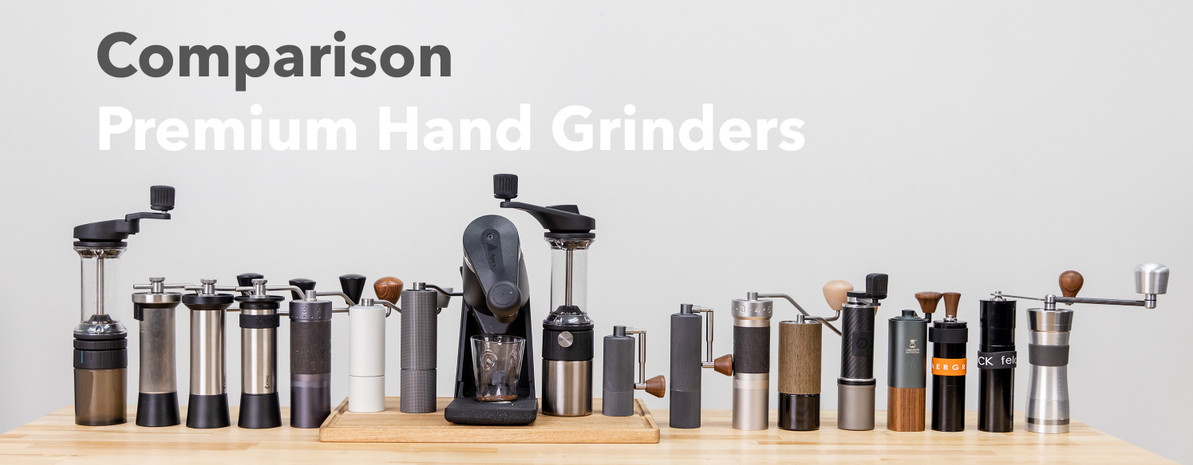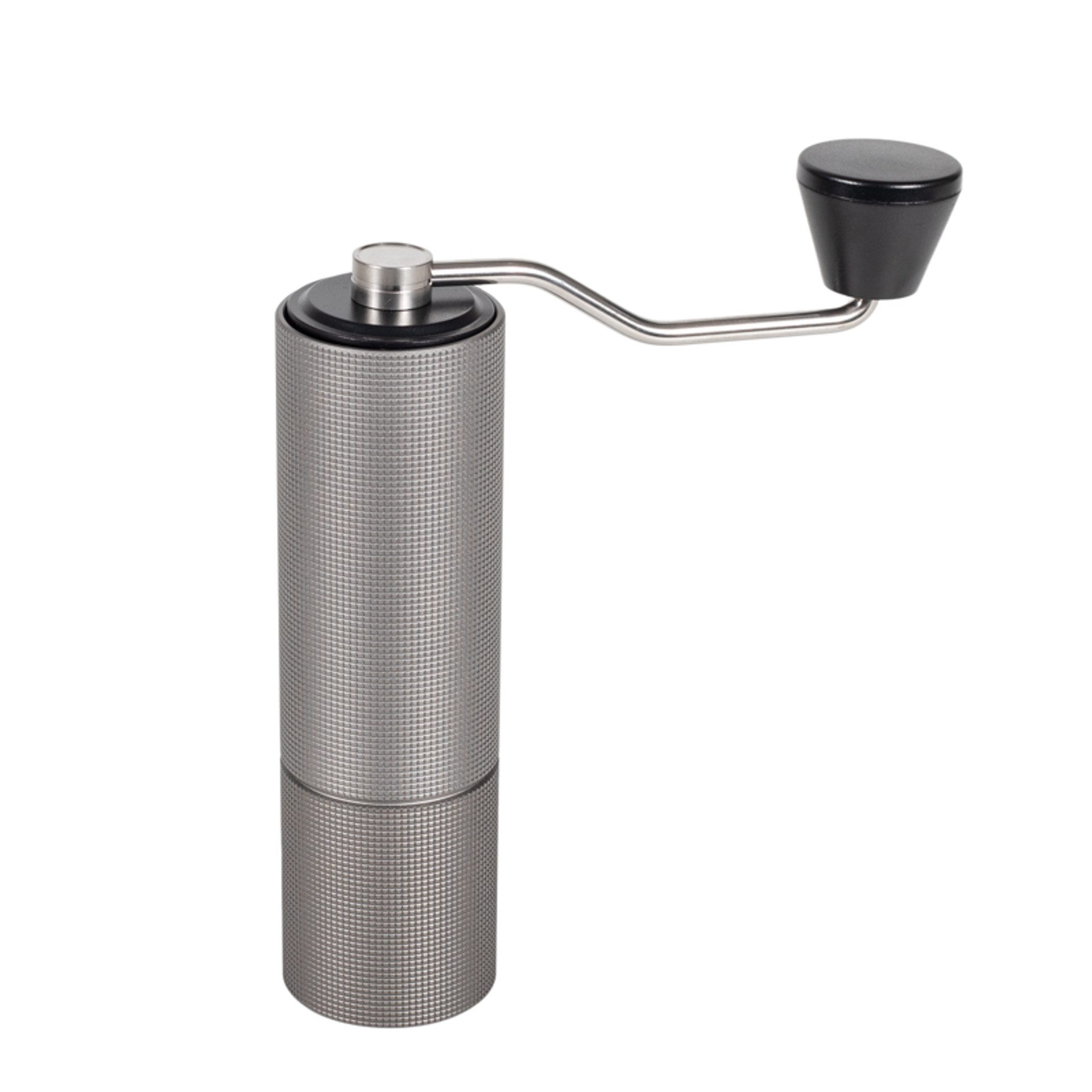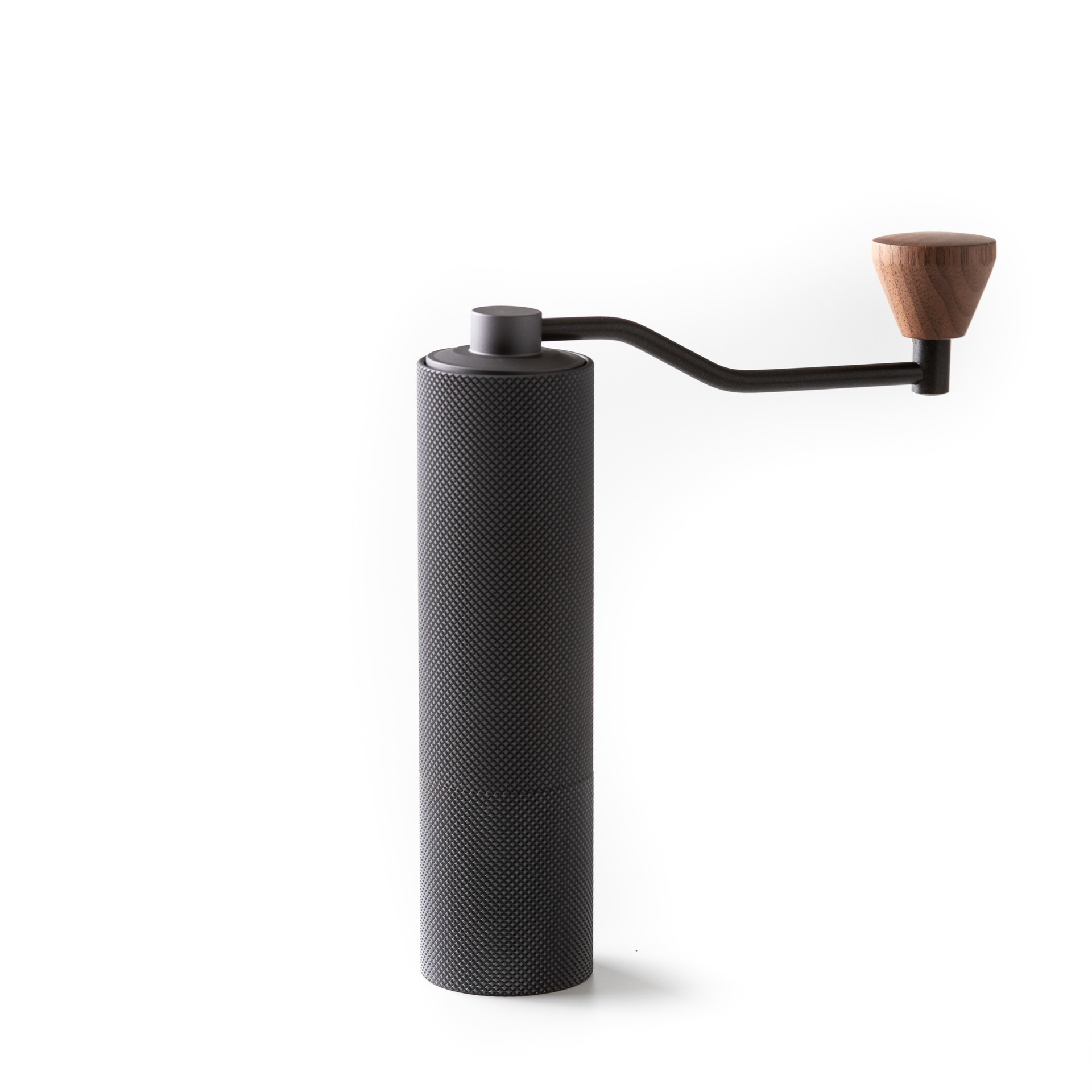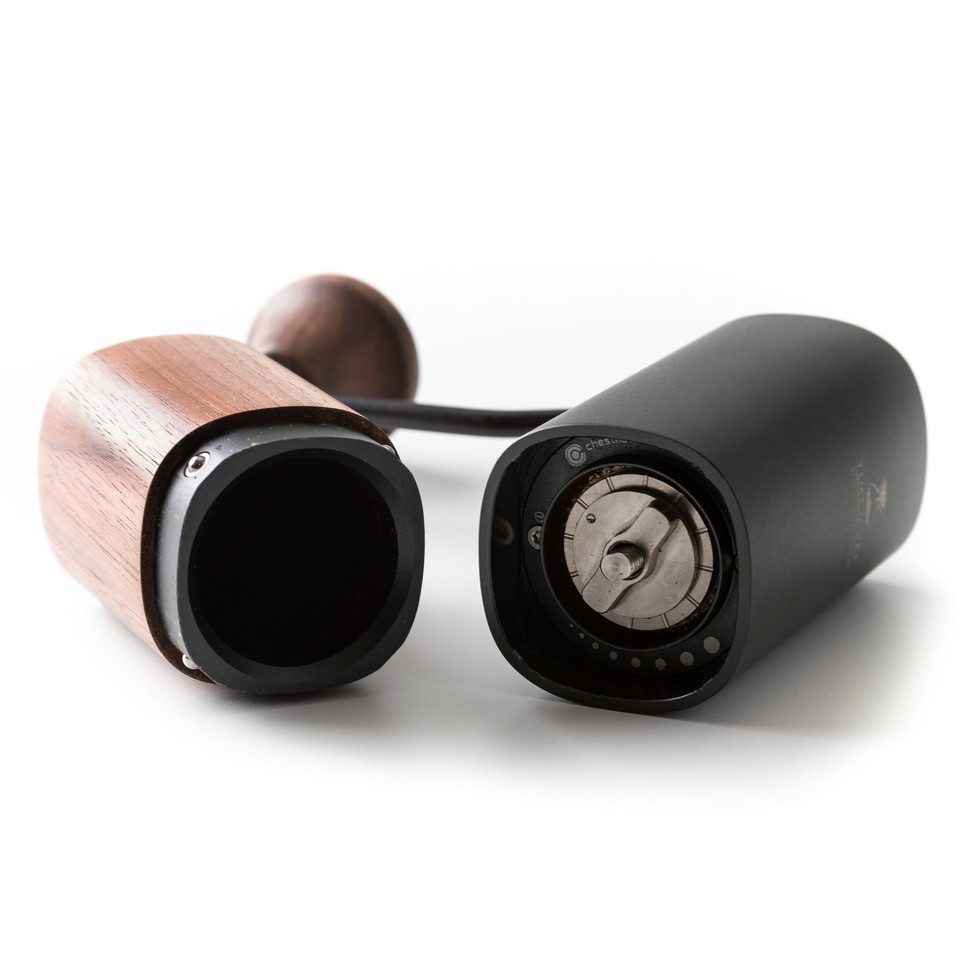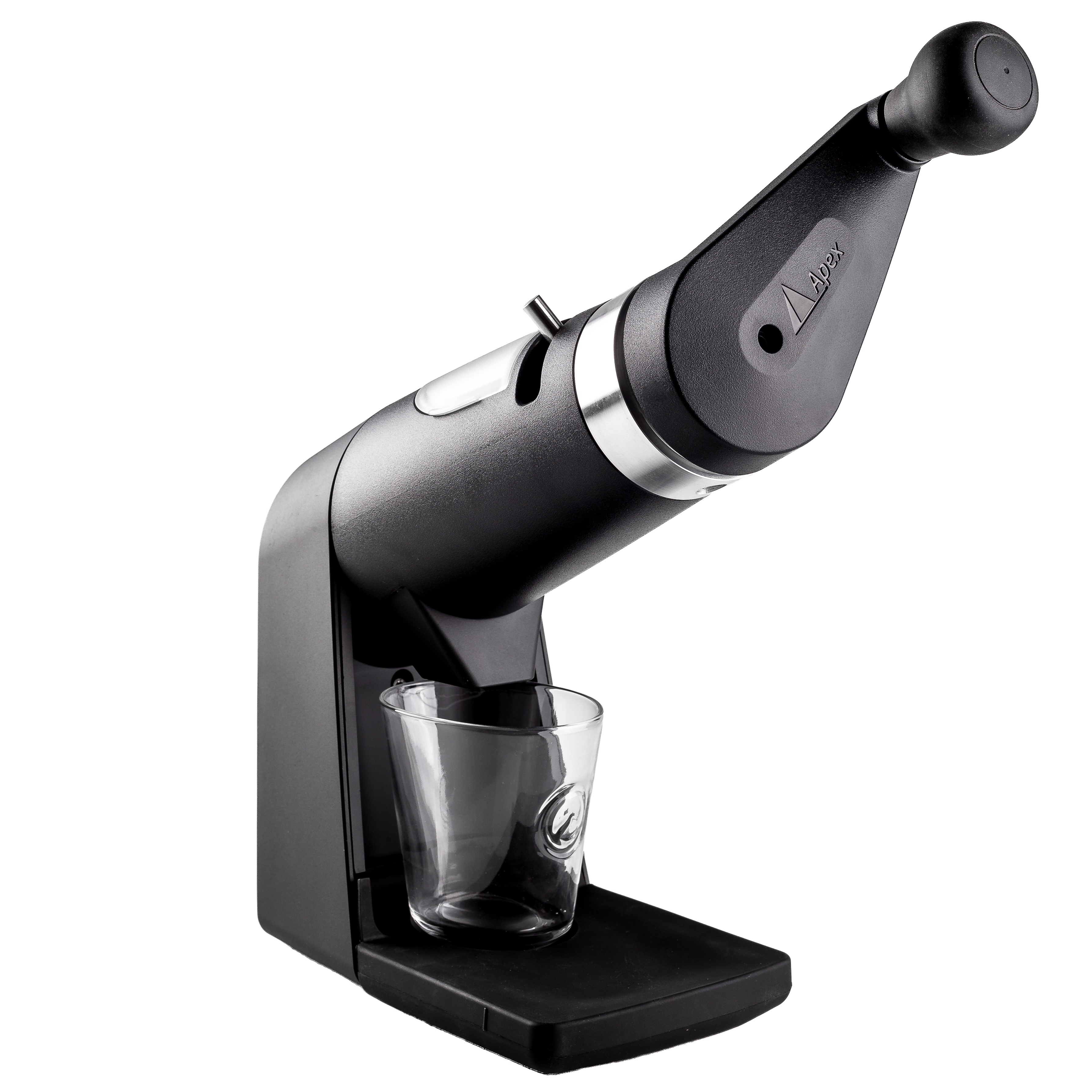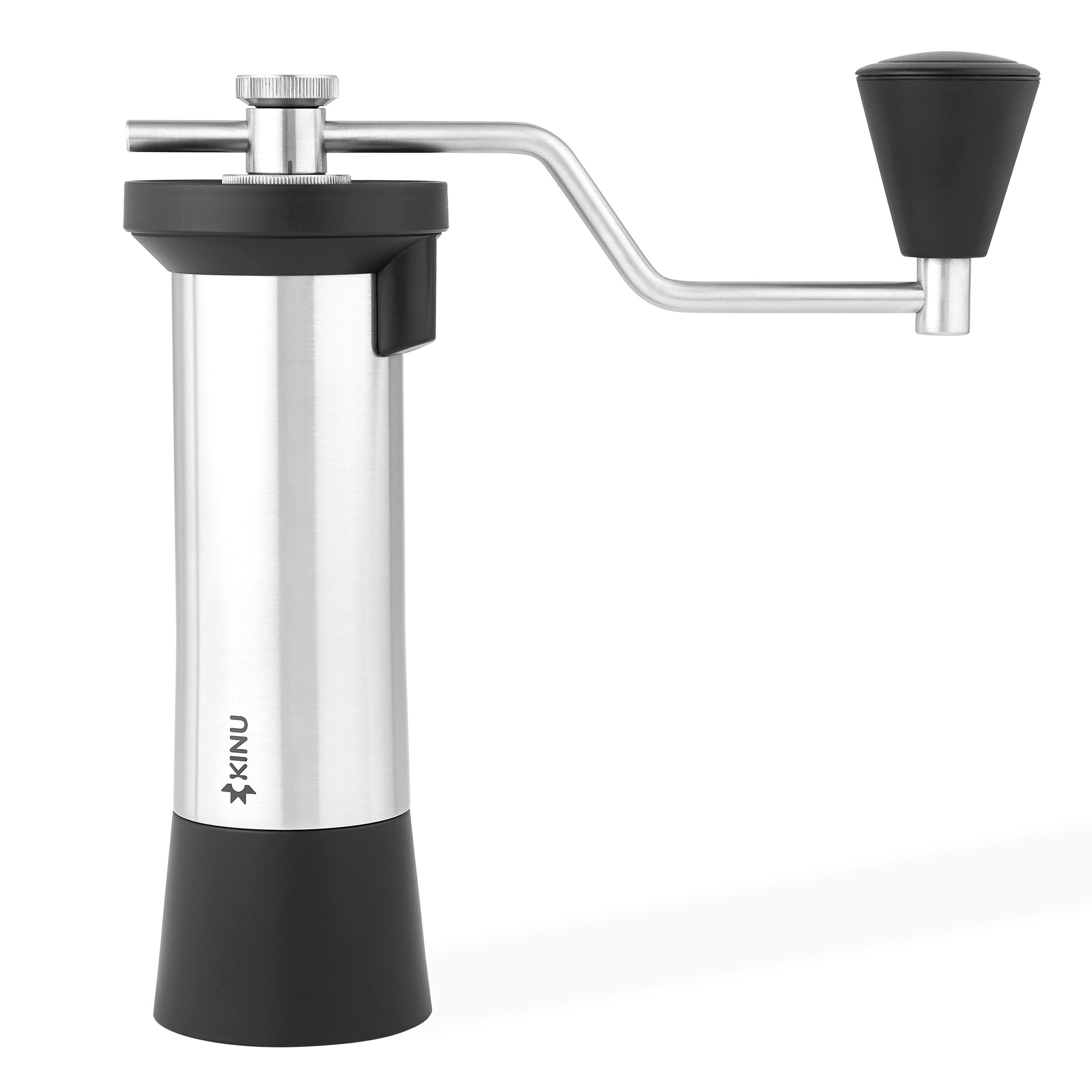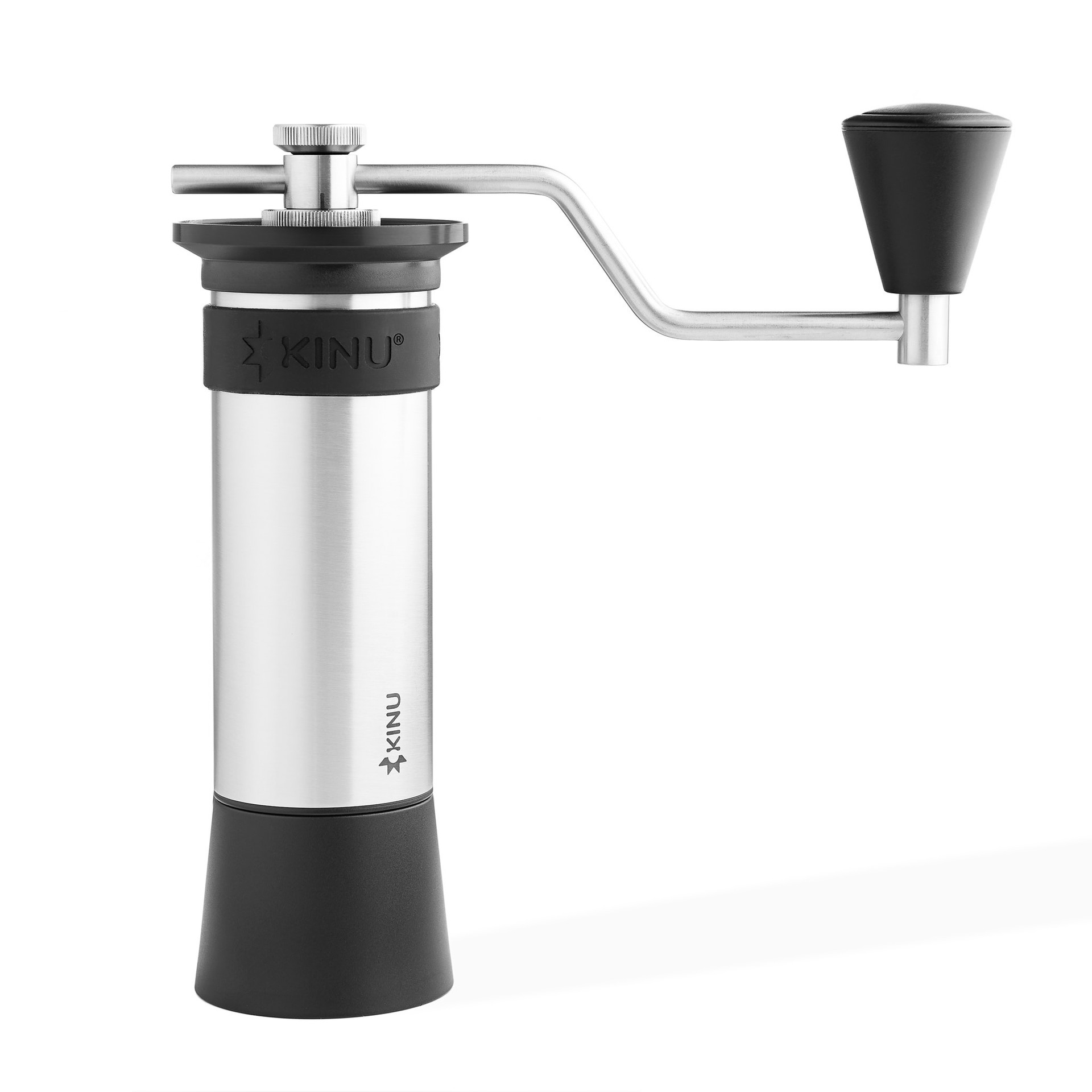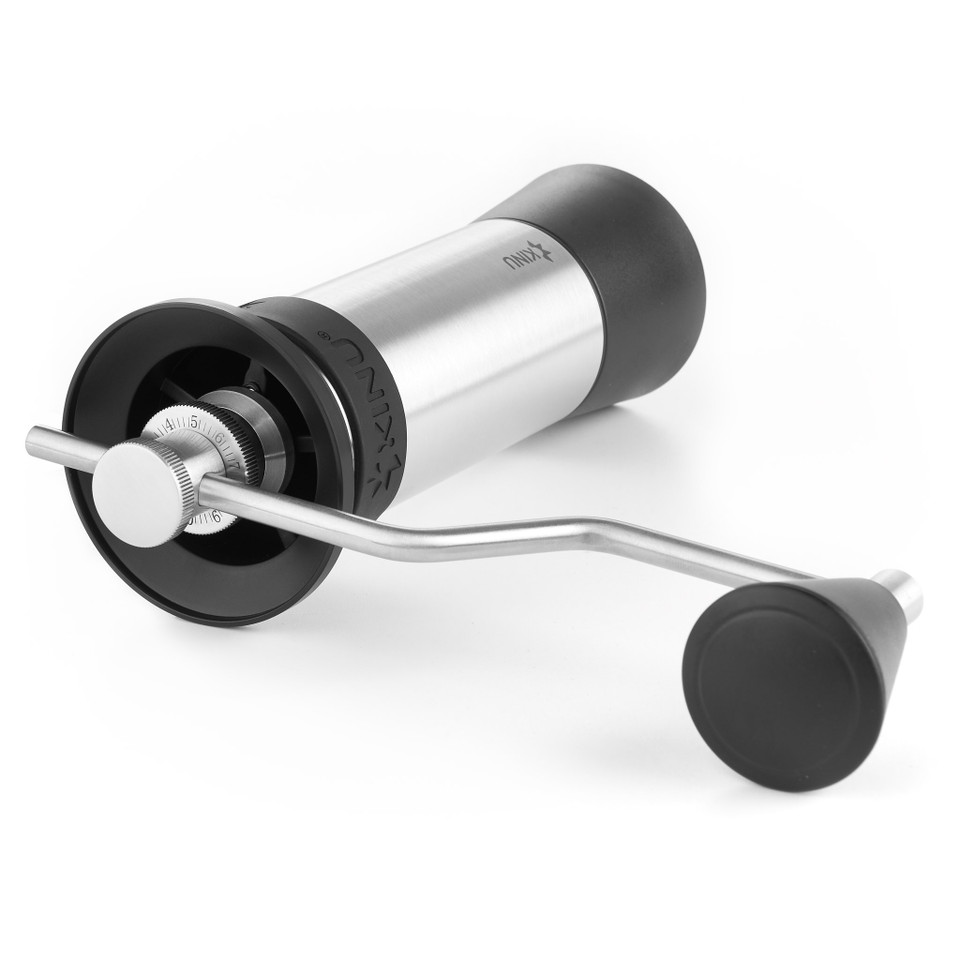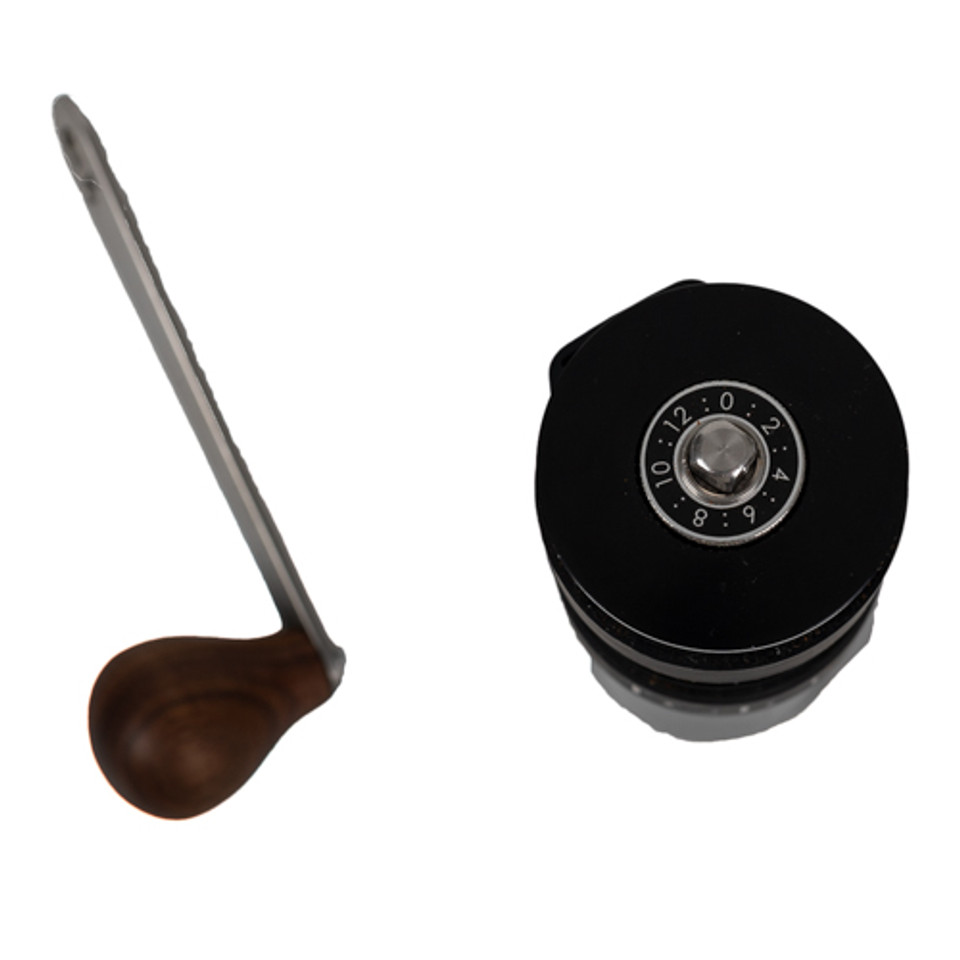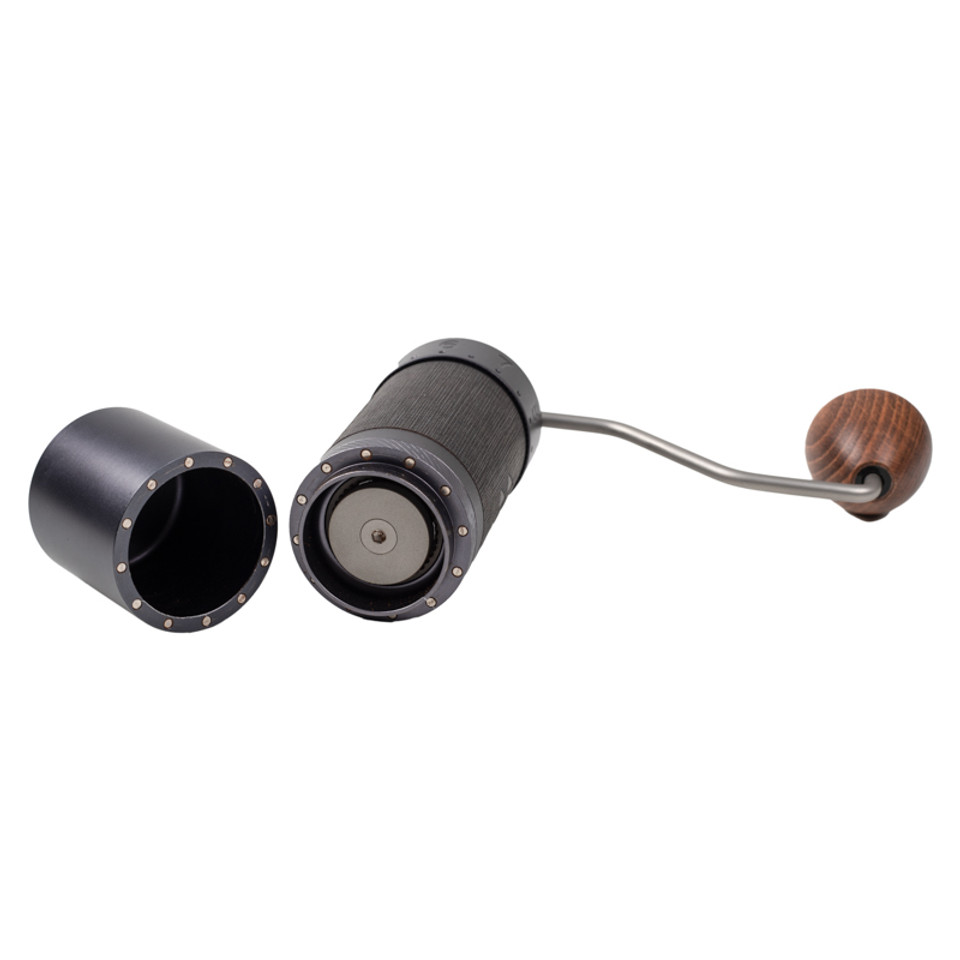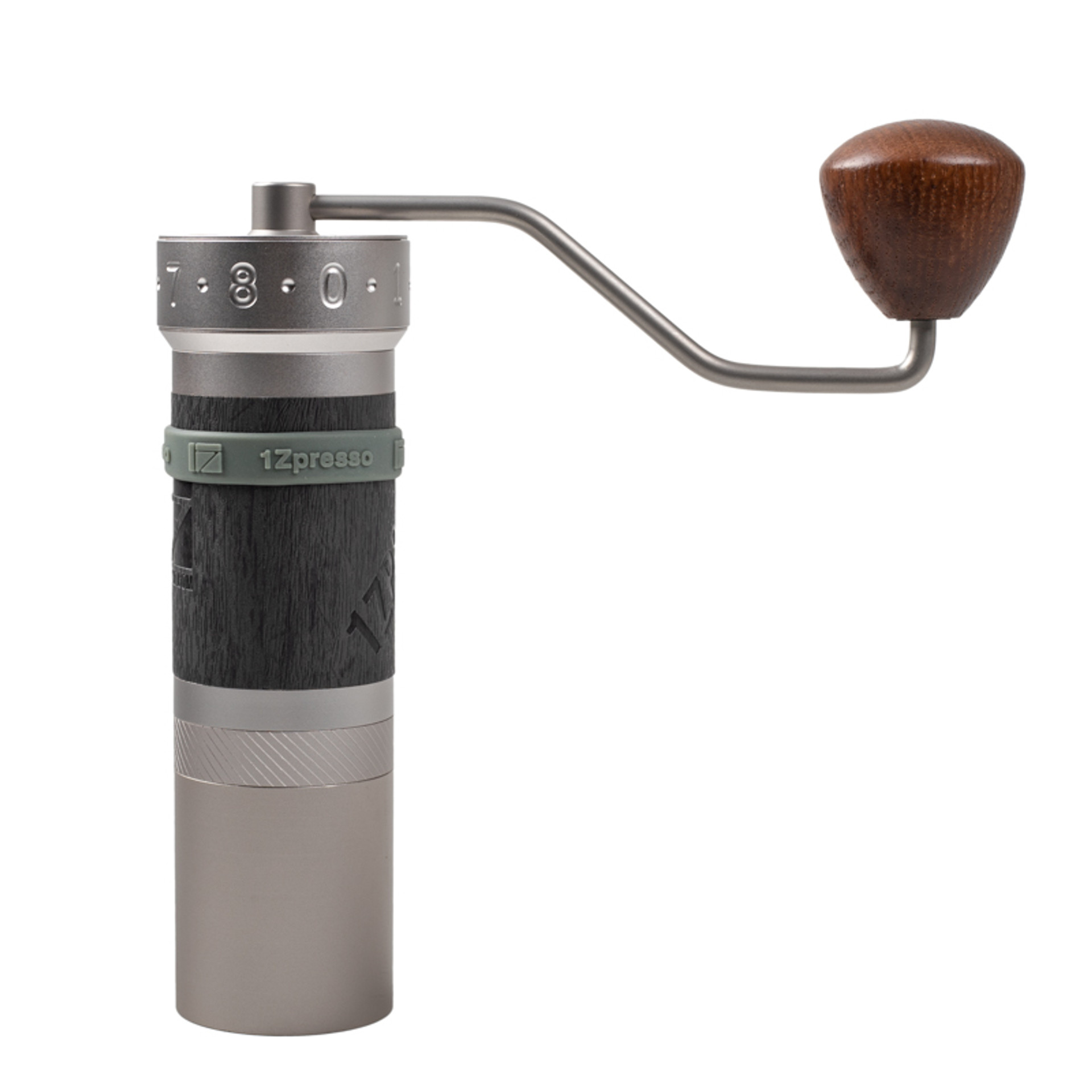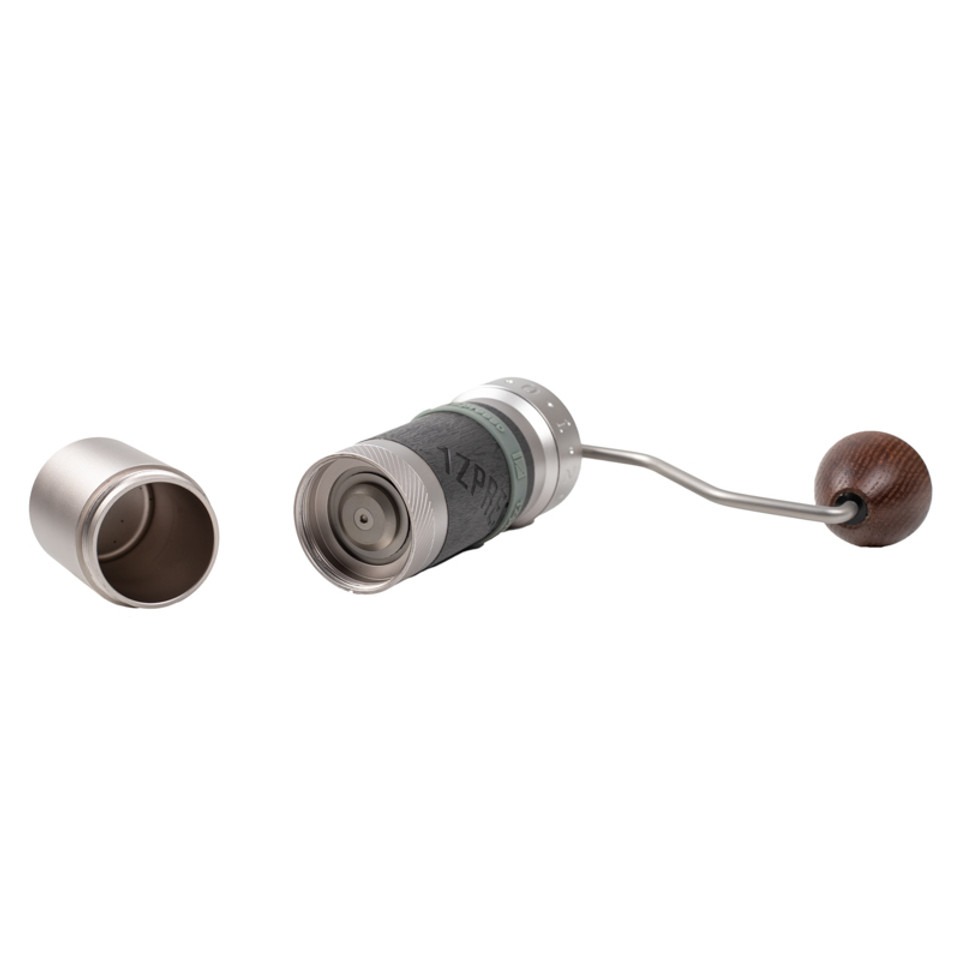A Comparison of Premium Hand Grinders for Coffee and Espresso
The ascension of the grinder to its status as the most crucial piece of brewing gear is well deserved. More than anything else the grinder has the potential to make, or severely limit, the flavor quality of brewed coffee. It is natural, then, for this movement to extend across new territory—the world of mobile brewing. The hand grinder, once considered a compromise for convenience sake, has been reinvented to contend with some of the best electric home grinders on the market. Whether you’re sitting around a campfire, summiting a mountain, riding economy class, recharging in the office break room, or trying to keep it quiet in the kitchen at 6:00 AM, hand grinders have made it possible to brew excellent coffee anywhere.
Over the last few years, several premium hand grinders have been introduced to the market. These grinders share a few defining characteristics, including precision-cut steel burrs, a secure center shaft riding on dual (or more!) bearings, and an overall build quality that promises durability and a long lifetime. These features are considered standard for a quality hand grinder and, in essence, are all that’s needed for a uniform grind. That being said, the rather straight-forward requirements can make it somewhat difficult to determine which grinders stand in front of the rest.
But there’s good news—we’ve done the work for you. We've sourced several of the most popular premium hand grinders on the market and put them to the test, highlighting the strengths and weaknesses of each. Features are what truly distinguish these grinders from one another and this blog is intended to help you find the grinder with features most relevant to your needs.
Click on a grinder to learn more about it or scroll down to read about them all.
Timemore C2 Max
Relatively new on the scene, Timemore has already made quite an impression with an assortment of stylish manual grinders, a scale, and even a suitcase for taking all the necessary coffee tools on the go. The C2 Max, follow-up to the Chestnut C2, is Timemore's entry level grinder, but it deserves that label only because of its materials, some of which are plastic, not because of its grind quality, which is well above its price point.
Fit and Finish
Most of Timemore's manual grinders have an aluminum unibody frame, which includes the supports inside. The C2 Max is the anomaly, though, in that its interior supports are PCTG plastic, not metal, and the pommel is plastic, too, not wood as on the other grinders from Timemore. All are factors in this grinder's relatively low price tag. That said, the important components, such as the metal body, 38mm conical steel burrs (cut for brewing), and dual bearings, are the same as those found on the other Timemore models, so you can expect the same premium grind quality as found on the Chestnut series. The C2 Max has a hopper capacity of roughly 30 grams.
Grind Adjustment
All the Timemore grinders on this list have a stepped adjustment wheel not unlike the one found on the Comandante. Turning the dial clockwise pushes the center burr closer to the outer burr, fining the grind; turning the dial counterclockwise does the opposite, coarsening the grind. There are 12 steps per revolution, all etched into the dial for reference, so you can find and recall your preferred grind sizes. The manual includes fairly accurate recommendations for grind settings: 6-12 clicks from zero for fine, 15-24 for pour over, and 24 and up for coarse methods.
- Most affordable grinder on this list.
- Similar grind quality to the other Timemore models.
- Available in two colors.
- Plastic components, including the interior supports.
- Burrs cannot grind fine enough for espresso.
- Thin plastic lid.
Timemore NANO Plus
Timemore’s contender for best travel grinder, the NANO Plus is the shortest grinder on this list and very nearly the lightest, a distinction it loses to the Fixie by a mere 30 grams. No wonder Timemore built an entire travel package around this compact grinder.
Fit and Finish
The NANO Plus and its bigger sibling, the Slim Plus, have a unique diamond pattern cut into its aluminum façade, a design choice that is not just for looks; it’s also for grip. Where it differs from the Slim Plus, perhaps obviously, is in its size and spring-assisted crank arm. The NANO Plus stands just 125 millimeters tall and 3 inches in diameter when the arm is folded against the body and the magnetic black walnut pommel is removed and slid inside the threaded grinds-catch. As a result of its squat frame, the hopper can fit only about 15 grams of coffee. On the inside are a stainless drive train with dual bearings and 38mm stainless steel E & B (espresso and brewing) burrs capable of grinding for all methods from Turkish to cold brew with equal quality.
Grind Adjustment
The NANO Plus can grind for espresso; however, the adjustment wheel is stepped, so it is difficult to dial in for espresso without up- or down-dosing to compensate for the lack of micro-adjustments. The dial is the same kind found on the other Timemore grinders. Turning it clockwise pushes the center burr closer to the outer burr, fining the grind; turning it counterclockwise does the opposite, coarsening the grind. A detent under the wheel can settle into any of the 12 grooves, which are the steps. The manual includes fairly accurate recommendations for grind settings: 6-12 clicks from zero for fine, 15-24 for pour over, and 24 and up for coarse methods.
- Collapsible crank arm paired with removable pommel greatly reduces overall diameter.
- Diamond pattern facilitates grip.
- Grinds for all coffee brewing methods
- Fairly small (15g) hopper.
- Aluminum frame will scratch if mishandled.
- Stepped adjustment makes dialing in for espresso difficult.
Timemore NANO


Fit and Finish
Weighing in at 0.8 pounds and standing just under 5 inches tall, this diminutive hand mill features study construction with 38 millimeter conical burrs designed to make quick work of small filter coffee doses (15-18g). Built with a unibody aluminum alloy design and employing 430 stainless steel and 304 stainless steel for the collapsible handle and central axle respectively, the NANO feels surprisingly hardy for its size and is built to last. With its dual bearing build and the diamond cut pattern on its surface this grinder is a joy to use, comfortable to grip, and quick to grind compared to many of its contemporaries.
Grind Adjustment
The Nano utilizes a click wheel on the underside of the cone burr to adjust grind size. Each click is relatively large and the grinder is best suited for filter or immersion methods because of this. However, the Nano can grind fine enough for espresso if needed. Because of this adjustment mechanism, and because of its very small 15-18g capacity, the Nano is best suited as a single cup pour over grinder.
- Ultra-compact size great for travel
- Textured grip and slim body for a perfect grip
- Fantastic grind quality for the price
- Limited capacity for single cup brewing
- Magnetic pommel can detach while cranking
- Relatively large grind adjustment steps don’t allow micro-adjustability
Timemore Slim Plus
The NANO Plus and the Slim Plus have a similar slate gray unibody frame, diamond pattern for grip and looks, compact diameter, and 38mm burrs. The Slim is the choice, though, if saving an extra 50mm of space in a suitcase is not a priority but hopper capacity is.
Fit and Finish
The Slim Plus, like the NANO Plus, has a unibody aluminum alloy construction, diamond pattern, dual bearings, black walnut pommel, and compact diameter. They look like family. The Slim Plus, however, stands about 2 inches taller and has a different crank arm, one that cannot be folded down to decrease the overall diameter. The Slim Plus comes standard with the 38mm titanium-coated stainless steel E & B (espresso and brewing) burrs, which grind efficiently for every method, including Turkish espresso, moka pot, pour over, and cold brew.
Grind Adjustment
Timemore uses the same stepped grind adjustment system—similar to the Comandante’s—for all of its grinders. Turning the dial clockwise pushes the center burr closer to the outer burr, fining the grind; turning the dial counterclockwise does the opposite, coarsening the grind. A detent under the wheel settles into the 12 grooves, which are the steps and which serve as reference points for finding and repeating your favorite grind sizes. The Slim Plus' titanium-coated stainless steel burrs were engineered for grinding on the fine side of the spectrum, a fact that is somewhat counteracted by the stepped adjustment system, making it difficult but not impossible to dial in for espresso. The key is to adjust the puck dose to compensate for the lack of micro adjustments.
- Compact frame but relatively large (25g) hopper.
- Diamond pattern facilitates grip.
- Fits inside the plunger of an AeroPress.
- Narrow hopper requires careful loading.
- Stepped adjustment system not ideal for espresso.
- The magnetic pommel at times comes off when grinding at high RPM.
Timemore Chestnut Slim


Fit and Finish
Small enough to fit into your Aeropress plunger but large enough to easily grind for a full 12 fl oz brew Timemore’s Chestnut Slim is a grinder without many peers. Built for portability and grind quality in equal measure this hand grinder is as comfortable in your luggage as it is on your countertop to be your go-to tool for your morning cup of coffee, and with its sturdy construction and high quality 38 millimeter conical burrs you can expect long life out the Slim no matter how you choose to use it. Featuring the same slim body and textured grip as the Timemore Nano, Nano Plus and Slim Plus, this Chestnut Slim offers the ultimate grip for a comfortable grinding experience.
Grind Adjustment
Like other Nano and Slim models, the Chestnut Slim features a stepped click wheel on the underside of the cone burr. Each step affects a relatively large grind size change, making this grinder ideal for filter and immersion methods, but with the capability to perform for espresso when needed.
- Textured grip and slim body for a perfect grip
- Fantastic grind quality for the price
- Enough capacity for 1-2 cups
- Magnetic pommel can detach while cranking
- Relatively large grind adjustment steps don’t allow micro-adjustability
- Less capacity than many other hand grinders
Timemore G1 Plus
At first glance, the G1 Plus does not fit into the Timemore manual grinder lineup. The other models have an industrial-chic look with textured aluminum or minimalist cylindrical bodies. The G1 Plus, on the other hand, is a delightful stew of competing identities: natural and manmade, cylinder and box, grinder and art object.
Fit and Finish
Juxtaposition—of materials, shape, and even use—played a large part in modernism from which Timemore pulled for the G1 Plus design. The frame is a thick, dark gray aluminum unibody construction with matching crank arm, and inside are a wider axle and bearings than are found on the other Timemore models. The midsection is flanked by black walnut—in the removable pommel at the top and push-fit grinds-catch at the bottom. Unlike the previous G1, this G1, the Plus, comes fitted with 38mm stainless steel E & B (espresso and brewing) burrs coated in titanium nitride. It is sufficient to grind for any method but is particularly good at feeding beans for fine grinding.
Grind Adjustment
The exterior may be squared off but the burr compartment is cylindrical. As such, the G1 Plus grind adjustment is the same stepped wheel and detent scheme found in the other Timemore models. Turning the dial clockwise pushes the center burr closer to the outer burr, fining the grind; turning the dial counterclockwise does the opposite, coarsening the grind. A detent under the wheel settles into the 12 grooves, which are the steps and which serve as reference points for finding and repeating your favorite grind sizes.
- Beautiful modern design.
- Espresso and Brewing burrs.
- Premium materials.
- The grinds-catch is difficult to detach smoothly from the body.
- Stepped adjustment system not ideal for espresso.
- Less comfortable to hold than other Timemore models.
Comandante C40 MKIV
Comandante hails from Germany, where some of the best equipment used in specialty coffee shops, especially in the way of grinders, is made. It was no surprise, then, that the Comandante Mark III was elevated to the gold standard of manual grinders. Late last year, however, the company released its next iteration: the Mark IV, which offers minor but thoughtful revisions to the previous model: an extra polymer grinds catch, handy for travel, and a redesigned engine frame to keep coffee beans from getting stuck in the hopper. Be heartened, though, because this is the same stylish, versatile grinder in most every other way.
Fit and Finish
The Comandante sports a stainless steel body wrapped in a thin wood veneer treated with a natural wax oil or, in the case of the cobalt, burgundy, and black models, a powder coat finish. On the inside are 39mm high-nitrogen martensitic conical steel burrs (which are highly resistant to pitting), an oak wood handle sourced from the Black Forest, stainless steel bearings, crank and axle, a BPA-free internal plastic frame, two grounds containers (one glass and one polymer), and a plastic lid attached to the end of the handle. The Comandante has a diameter of about 2.4", a height of 6.3", and a weight of 1.63 lbs. Its hopper and grounds container can hold about 40-45 g of coffee.
Grind Adjustment
The Comandante has gained a well-deserved reputation for the satisfying audible clicks of its grind adjustment dial, which make setting, recording, and returning to favorite grind sizes as easy as it gets in hand grinding. Overall, the dial allows for 40 different grind sizes, from Turkish all the way through French Press or cold brew, and the user manual, which comes in the box along with other such goodies as an extra polymer grinds catch and lid, provides an accurate guide for starting with any brewer.
- High uniformity across the full range of grind sizes.
- Premium materials such as the wood veneer and glass grinds-catch.
- Stepped micro-adjustment system is sufficient for small changes to espresso.
- Consists of many plastic parts.
- Slightly louder grinding volume than other grinders on this list.
- Some grind retention around the adjustment wheel.
Orphan Espresso Fixie
The Fixie is Orphan Espresso’s smallest grinder, standing roughly five inches shorter and one inch slimmer than grinders in the company’s Lido line, and lighter by more than a pound, cementing it as the most travel-friendly model from OE and from any manufacturer on this list. Backpackers rejoice!
Fit and Finish
Designed to be compact and ultralight, i.e. super travel-friendly, the Fixie is just six and a half inches tall and 330 grams, making it lighter and smaller than most coffee bags. The Fixie also looks featherweight. The body and handle are carbon fiber and the grinds-catch is titanium, lending it an aesthetic not unlike the frame on a competition bicycle cresting the Pyrenees. On the inside are an aluminum axle and burr carrier, Delrin bearings, and—the heaviest part by far—a 140g, 47mm stainless steel conical burr set from Etzinger.Grind Adjustment
The Fixie eschews the common wheel and dial in favor of a “fixed” grind adjustment system wherein spacers are placed on the axle to decrease the distance between the burrs. The grinder comes with three plastic “Fixie Disks” for general grind sizes (fine, medium, and coarse) and four Teflon “Tuner Shims” for minor adjustments. Adding the fine disk makes the grind fine (e.g. Aeropress); adding the medium disk makes the grind medium (e.g. Kalita Wave); and adding the coarse disk makes the grind coarse. Then the grind can be fine-tuned with the shims, which come in two sizes: .10mm and .20 mm.
- Lightest grinder on this list.
- Unique grind adjustment system.
- Comes with Tyvek travel bag.
- The adjustment system has a steep learning curve.
- Side-fill hopper opening is narrow.
- Weight has been privileged over grind quality.
Orphan Espresso Lido Basic

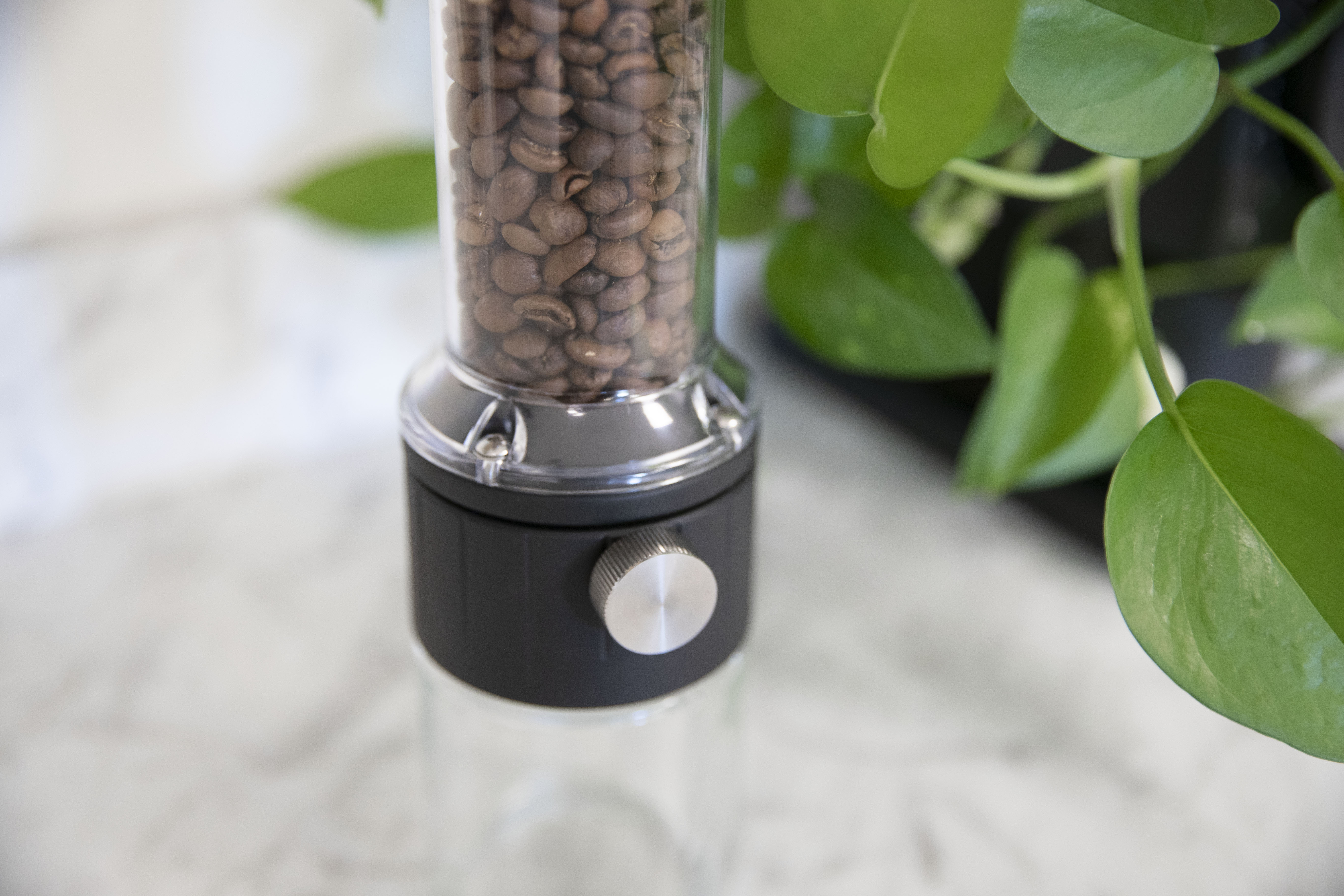
Fit and Finish
Constructed of Tritan plastic, steel and aluminum parts, the Lido Basic is extremely durable, but not the most attractive of hand grinders. Its large body can hold up to 100g of coffee beans, and inside it features a very large 48mm conical steel burr, making this grinder ideal for quickly grinding large batches for Chemex or auto brewers. The Lido Basic features a fixed handle (vs the Lido ET’s folding handle) so this grinder is less ideal for travel, and includes no carrying case.
Grind Adjustment
Orphan Espresso’s update to the old Lido 3’s locking ring adjustment is a breath of fresh air. Now featuring a simple thumb screw to lock and unlock grind adjustment, changing grind size is a breeze and takes far less time and effort, and ensures better accuracy when targeting a specific setting. Loosen the thumb screw, twist the body, then lock the thumb screw back down and you’re done.
- 100g capacity is largest of all hand grinders
- 48mm burr offers super quick grinding
- Simple external grind adjustment requires no disassembly
- Very large grinder
- Strange center of gravity, wobbles a bit when cranking
- Fixed handle cannot be folded down for travel or storage
Orphan Espresso Lido ET


Fit and Finish
Built on the same platform as the Lido basic but with a folding handle and neoprene carrying case for travel. The Lido ET retains the Lido Basic’s huge 100g hopper and 48mm conical steel burr set for super fast and efficient grinding. Its body is constructed of Tritan plastic, aluminum and stainless steel parts.
Grind Adjustment
The Lido ET features a dual locking ring adjustment where the bottom ring sets the grind size and the top ring locks the bottom ring in place. This adjustment also features a finer thread pitch than the Lido Basic, meaning each adjustment will affect a smaller change to grind size making this grinder more ideal for espresso grinding.
- Huge 100g capacity
- Can be used for filter, immersion and espresso with ease
- Folding handle and carrying case ideal for travel and storage
- Dual locking ring adjustment is not as intuitive as other adjustment mechanisms
- Large center of gravity makes this grinder a little wobbly when cranking
- Very large grinder
Orphan Espresso Apex
Perhaps it is unfair to include the Apex in a hand grinder comparison when it was designed to be bolted to a countertop or screwed into a cutting board, but we didn’t know where else to put it and it deserves to be considered alongside other manual grinders, so here it is. The Apex features enormous nesting flat burrs of slightly different diameters (the rotating burr is 78mm while the stationary burr is 75mm) that produce the most uniform grinds we have ever seen from a manual grinder. Intrigued?
Fit and Finish
The Apex is hailed by Orphan as the world’s first and only flat burr manual grinder, which is only half of the story. The other half is in the kind of burrs: stainless steel, deep-cut prism-tooth burrs, commonly referred to as “ghost tooth” burrs, which make this grinder rarer still. Operated at the suggested RPM, which is made easy by the planetary gear drive that delivers four burr spins for every one handle spin, the Apex produces a clean, uniform grind. In addition, the rotational burr is bi-directional, meaning the handle can be turned clockwise or counterclockwise depending on your preference. The Apex is large, though, covering 13 inches from back to front and 5 inches wide at the base, and is relatively heavy (11.13 lbs.), too, because of its hardy materials: a zinc body and base, aluminum chassis, stainless steel axle, and five bearing sets (yes, five!).
Grind Adjustment
The Apex is made for all coffee brewing methods coarser than espresso and Turkish. The grind is easily adjusted by turning a knob on the collar to any of the 20 predetermined stops, which are roughly .075mm from one another. Pretty simple. Orphan Espresso recommends a maximum of 120 handle rotations per minute, which translates to 480RPM on the rotational burr, and which is easier to achieve on the coarser grinds. Go any faster and the grind quality diminishes.
- Exceptionally uniform grinds.
- Bi-directional (clockwise or counterclockwise cranking).
- Relatively large capacity (60 gram) hopper.
- The ghost tooth burrs grind more slowly than conical or standard flat burrs.
- Must be secured to table or base.
- A few stubborn beans may get caught in the impeller and fail to feed into the burrs.
Mazzer Omega
Italian commercial espresso grinder manufacture Mazzer cut the cord in 2021 and, to the surprise of many, released a multi-purpose hand grinder for coffee and espresso. This is the most expensive hand grinder in our catalog, and it's everything you'd expect from a Mazzer product: The highest quality materials, gorgeous aesthetics, and supreme functionality and ease of use. If you're looking for an end-game handgrinder that's also a showpiece, look no further than the Omega.
Fit and Finish
The Omega is constructed of milled aluminum and a lightweight carbon fiber handle. The pommel on the handle is magnetic, and together with the handle can be magnetized to the side of the grinder for storage. The Omega features no lid for easy access to the hopper, and a quick-release twist-lock catch cup. When holding the Omega in your hands, you'll be struck with the incredible build and quality of materials, much like their commercial line of grinders.
Grind Adjustment
The Omega features an external grind adjustment, like the 1Zpresso grinders. This allows the user to change grind size without any disassembly on the fly. Each click is equivelant to around 33 microns of grind size change, which is plenty for any filter method, and equates to about 3-4 seconds of brew time change for espresso. The Omega's True Zero calibration ensures that each unit's burrs actually touch at the zero marker, so you never have to mark where your true starting point is.
- Elegant modern aesthetic.
- Innovative external adjustment
- Smooth, easy grinding
- Expensive compared to other grinders with similar performance.
- 33 microns change not small enough for tiny changes to espresso flow.
- Open hopper design can spit out a bean or two on occasion.
Kinu M47
Constructed primarily of steel parts, the M47 is solid to hold (and noticeably heavy) with little slop or play in the parts. The grinding action is incredibly smooth and its 47 mm conical steel burrs make short work of your bean dose even at espresso-fine settings. Its weight and its open-top design make it less convenient for travel, but overall this is a superb hand grinder.
Fit and Finish
Kinu has clearly put a great deal of thought and care into the design of the M47, and while none of the other grinders in this comparison feel cheap, it does evoke a greater feeling of durability and stability than some. The M47 is primarily made of stainless steel—only the handle pommel and some other trim parts are made of black ABS plastic. Inside is a set of 47 mm “Black Fusion” coated conical steel burrs, four steel bearings, and internal steel supports. The hopper portion can hold 30-40 grams of whole beans on average, though we have been able to squeeze in 50 with certain denser coffees. On the novel side of things, the catch cup uses a set of magnets to attach directly to the ring burr, so it can be removed with a solid tug but stays fixed in place while grinding. The grinder measures 8.25” high, 2.75” deep, and 7.8” wide with the handle attached (the handle easily unscrews for storage, but no holster is provided with the grinder). At 2.3 lbs., it is a heavy grinder compared to others.
Grind Adjustment
Grind adjustment is micro-stepped: each click on the adjustment wheel corresponds to 0.01mm of burr travel, which is more than suitable for dialing in espresso. The adjustment wheel is clearly marked with numbers and dashes, each registering a click thanks to the detents, and there are 50 clicks per revolution. The top screw must be loosened slightly for easier grind adjustment, but otherwise it is simple and clear to make adjustments and record your desired settings to return to later.
- Exceptional build quality and smooth grind.
- Generous manufacturer warranty (5 years).
- Fast, simple grind adjustment with actual reference for burr distance (0.01 mm per click)
- Coarse grind settings yield more fines than comparable grinders.
- Depending on grip preference, the ABS thumb stopper may be uncomfortable.
- The magnets in the grinds-catch have been known to come loose or dislodge.
Kinu M47 Simplicity
The M47 Simplicity is exactly what its name suggests: a simpler version of the M47. Simple here does not refer to the grinder’s capability. In fact, the Simplicity uses the same premium stainless steel body and internals as the original M47 Classic, replacing some of the less important parts with plastic to cut costs and weight, so operation is practically identical.
Fit and Finish
The whirring is gone and so is some of the steel, but mostly the Simplicity looks and feels like the M47 Classic. The differences here are mostly cosmetic. The bean funnel and grinds-catch are ABS plastic, and the pommel is completely plastic, too, doing away with the original’s silver accent. Those changes reduce the height by a fraction and the weight by about 200 grams (to 2.1 lbs.). Much is the same, though, including the thumb stopper and all the important internals: 47mm “Black Fusion” coated conical steel burrs (best suited for espresso), stainless steel axle, roller bearings, and thick steel supports. The hopper can hold 30-40 grams of whole beans, but—as with the other M47s—lacks a lid, so err on the side of a controlled grinding motion.
Grind Adjustment
Grind adjustment is the same, too—loosen the top nut, adjust the grind, and then tighten the top nut to lock. Technically, the Classic has 50 clicks per revolution, and is therefore called “micro-stepped”; however, the steps are so incredibly tiny and the clicks so incredibly faint that it hardly earns the distinction. In the Simplicity, simplicity won out and the clicks were removed in favor of a completely stepless (read: clickless) adjustment scheme, making it similarly espresso-friendly. The adjustment wheel is identical to the other M47s, too, with numerals (0-9) and dashes (4 between each number) for reference, and the grind is likewise changed by unscrewing the top nut before turning the wheel to a desired grind size.
- Exceptional build quality and smooth grind.
- Generous manufacturer warranty (5 years).
- Fast, simple grind adjustment with actual reference for burr distance (0.01 mm per click)
- Coarse grind settings yield more fines than comparable grinders.
- Depending on grip preference, the ABS thumb stopper may be uncomfortable.
- More plastic parts than the original M47.
Kinu M47 Phoenix
In 2018, Kinu’s factory in Reghin, Romania caught fire. The water from the firefight, when paired with the flames and smoke—not to mention the cold winter!—, thoroughly destroyed the building. This grinder, the Phoenix, was the first grinder produced by Kinu after the disaster, and was made with much more plastic than its predecessors to speed along the production timeline, filling that Kinu-size gap in the market created by the fire.
Fit and Finish
The Phoenix is the outlier in the M47 lineup because the internal supports, which in the other models are thick steel bars that auto-center the burrs, are plastic pieces meant only to hold the axle in place at the top and bottom of the body. The result is a significantly lighter grinder (1.6 lb.) that doesn’t compromise much, if any, in grind quality. Because the thick steel supports have been removed, the hopper is much roomier and can hold up to 60 grams of beans. The lidlessness, though, presents the same problem as with the other M47s at the higher capacities, so err on the side of caution. The interior shares the ABS plastic grinds-catch with the Simplicity and other key parts—stainless steel body and axle, 47mm conical burrs, and ball bearings—with all M47 models.
Grind Adjustment
Grind adjustment on the Phoenix is the same as on the Simplicity. The adjustment wheel is clearly marked with numbers and dashes, amounting to 50 options per revolution.
- Depending on your grip preference, the silicone ring may be more comfortable than the thumb stop on the other Kinu models.
- Generous manufacturer warranty (5 years).
- Fast, simple grind adjustment.
- Many more plastic parts, including internal supports, than original M47.
- Coarse grind settings yield more fines than comparable grinders.
- Plastic grinds-catch is harder to maneuver than the original M47's magnetic catch.
Knock Aergrind
The Aergrind may just be the ultimate grinder for the frugal traveler. Designed to fit inside an AeroPress plunger, the Aergrind is the smallest grinder in our lineup and makes for the perfect addition to your hiking or camping gear, or even a home brewing setup. Beyond being designed with the AeroPress in mind, it also performs best when grinding for that or similar hybrid brewing methods such as the Delter Press. If that is your favorite way to brew, then this economical grinder offers similar grind quality to other premium models for a fraction of the price.
Fit and Finish
The Aergrind features a 38mm ceramic-coated steel burr set, familiar to those who’ve used the Feldgrind or Feld2. The Aergrind stands only 14.5cm high and has a diameter of 4.7cm. A simple removable steel handle with a plastic knob fits over the center shaft against a thin black plastic lid. The Aergrind also features dual bearing mounts and an anodized unibody milled from aluminum. Like Knock’s other grinders, the diameter of the Aergrind feels perfect for the hand and grinding is smooth.
Grind Adjustment
Like Knock’s other models, stepless adjustments to grind size are made at the top of the grinder. Hold the lid in place and rotate the handle to adjust grind size. A numerical reference from 1-12 is imprinted on the top of lid. Each number has two dots between them, for total of 36 reference points. A small notch near the base of the handle serves as an indicator for the current setting. Because the Aergrind requires no disassembly when adjusting grind size, changes can be made faster than you can say, “Made By Knock”.
- Fits inside the chamber of the AeroPress plunger.
- Similar grind quality to the Feld2 at a lower price.
- Super fast grind adjustment.
- The handle and rubber sleeve do not fit inside an AeroPress with the grinder.
- Center burr has a very small amount of lateral play.
- Fines can be an issue for pour over brewing methods, limiting it flexibility as an all purpose hand grinder.
Knock Feldgrind
If the Aergrind is the perfect travel grinder, the Feldgrind is the perfect hybrid grinder: slim and collapsible enough to take on the road, yet large enough for the daily grind. This new iteration, after four years of R+D by Knock, has been released with a longer crank arm, more fashionable pommel, and new internals; and still the price tag is under $200.
Fit and Finish
The Feldgrind features 38mm titanium-coated conical steel burrs designed for all brewing methods and a smooth, fast grinding experience. Overall, the Feldgrind is narrow as the Aergrind (~2 inches) but taller, standing about 8-inches high. As a result, it can fit more coffee in the hopper and the grinds-catch (about 35-40g), so it can handle the standard dose for most, if not all, home brewing methods from espresso through French Press. The handle is stainless steel and the knob, or pommel, at the end has been upgraded to wood from the previous iteration's plastic. Also included in this new model are larger (dual) bearings, an over-built shaft, and, a product of all the changes, more consistent particle uniformity.
Grind Adjustment
Like the Aergrind, the Feldgrind features a stepless adjustment wheel at the top of the grinder. The lid must be removed, though, to access the wheel, and for the lid to be removed, the handle must first be removed, so a little work is in order to load the hopper and fine-tune the grind. The wheel features even numbers from 0-12 with hyphens to mark the odd numbers; these are just for reference, though, because the Feldgrind is a stepless grinder, making it possible to dial in espresso. The current grind setting is displayed in a window cut into the handle, so settings are easy to record and repeat.
- Travel-friendly design.
- Updated wood pommel.
- Accessible top-mounted grind adjustment wheel.
- Learning curve with grind adjustment.
- Must remove lid and handle to change grind or add coffee.
- Slippery without the silicone band.
1Zpresso J-Max
Like Timemore, 1Zpresso impresses with its ability to make affordable grinders with premium components and premium results. The J-Max is no exception. Given its style, sleek aluminum frame, wood pommel, and other features, it fits right at home with the likes of the Timemore G1 Plus and Option-O Remi; and given its espresso-focus, it fits right at home with Kinu.
Fit and Finish
The J-Max, like all 1Zpresso grinders, is made of premium materials. The body, including the inner frame, is a solid piece of aluminum, as is the grinds catch, which, because of the magnetic seal, is easily locked in or removed with a simple twist. The axle, bearings, and burr carrier are all stainless steel and the pommel is solid wood. Easy is in the name and function: this grinder is disassembled and reassembled without losing the grind setting.
Grind Adjustment
The J-Max is a stepped grinder, but, with its unique micro-stepped system, it is about as close to a stepless grinder as is possible with the added benefit of recording and returning to favorite grind settings easily. Each step, or click, on the adjustment collar corresponds to a mere 8.8 microns, or 0.0088 millimeters, change in the particle size of the coffee grounds. Such minute adjustments, when paired with the 48mm titanium-coated burrs that excel in the finer range, make the J-Max ideal for dialing in espresso shots like very few stepped grinders can. Be aware, though, the threading is the reverse of practically every other hand grinder on the market: righty loosey, lefty tighty. This takes some getting used to.
- Micro-stepped precision grind adjustments.
- Conveniently located external grind adjustment ring.
- Premium materials and accessories.
- Counterintuitive grind direction (left for finer, right for coarser).
- Opaque plastic lid.
- Optimized for espresso, not pour over.
1Zpresso K-Pro
Despite being fairly new to the coffee world, 1Zpresso is quickly making a name for itself by manufacturing some of the most budget-friendly, all-purpose manual grinders in the industry, such as the Red Dot Design Award-winning K-Pro, which offers an intuitive and smooth grinding experience at any setting.
Fit and Finish
The 1Zpresso K-Pro looks and feels premium. It is also incredibly comfortable to hold because of its slim profile and silicone sleeve (along with an optional silicone band, which comes in the box, for greater grip). The body is composed entirely of aluminum and features a reverse-threaded mid-section that allows for direct access to the burr chamber for easy and thorough cleaning: a quality not found on most manual grinders. Like its siblings, the K-Pro has a stainless steel axle, bearings, and burr carrier, and a solid wood pommel.
Grind Adjustment
The K-Pro has the same reverse-threaded external grind adjustment system found on the J-Max, so the grinds-catch does not need to be removed to change settings, which is convenient, but the counterintuitive turning (right for loose or coarse; left for tight or fine) takes some getting used to, which is not convenient at first. The adjustment ring shows numbers from 0 to 9 with ten steps within each number, amounting to a total of 90 settings, each one equal to a change of 22 microns, or 0.022mm, of burr travel. The audible clicks ensure easy recording and repeatability. What's more, the 48mm stainless steel conical burrs grind coffee to incredibly uniform grinds for clean and bright brews.
- External grind adjustment system.
- Slim, comfortable profile.
- Impressive particle distribution.
- Recalibration can be complicated.
- Stepped adjustment not ideal for espresso.
- Not scratch-resistant.
In conclusion:
From size to style, price and application—there are several things to consider when buying a hand grinder. Our approach here at Prima is to curate a condensed selection of equipment through first-hand experience and judgement of quality, value, and features, then present the best to you. Although each of these grinders produces largely similar uniformity of grind (so similar we didn’t feel it was worth comparing), there are plenty of distinguishing features. There’s a grinder for everyone, and we hope this comparison guide was useful in choosing a hand grinder most relevant to your brewing needs.
Last Updated: May 2023
